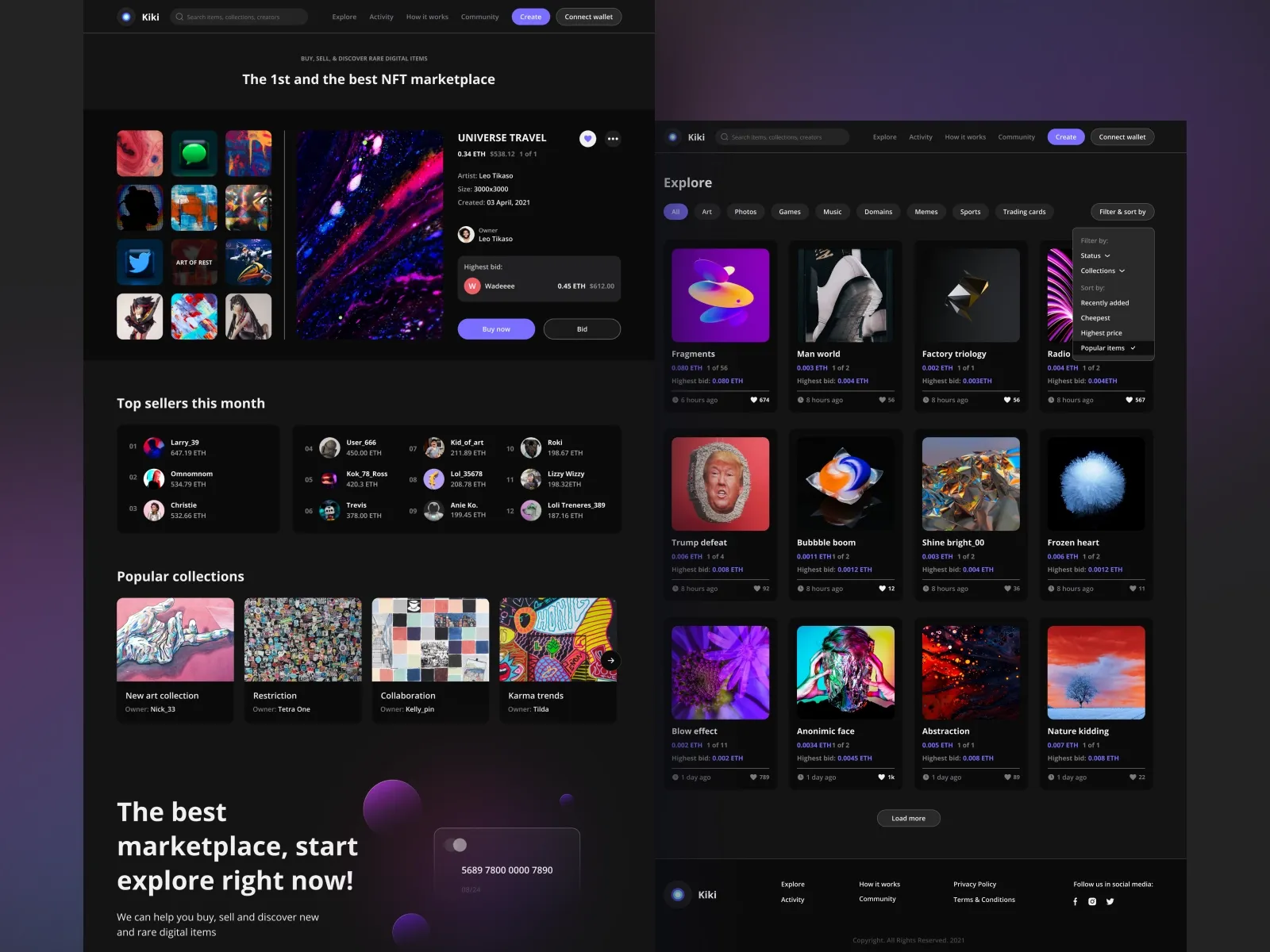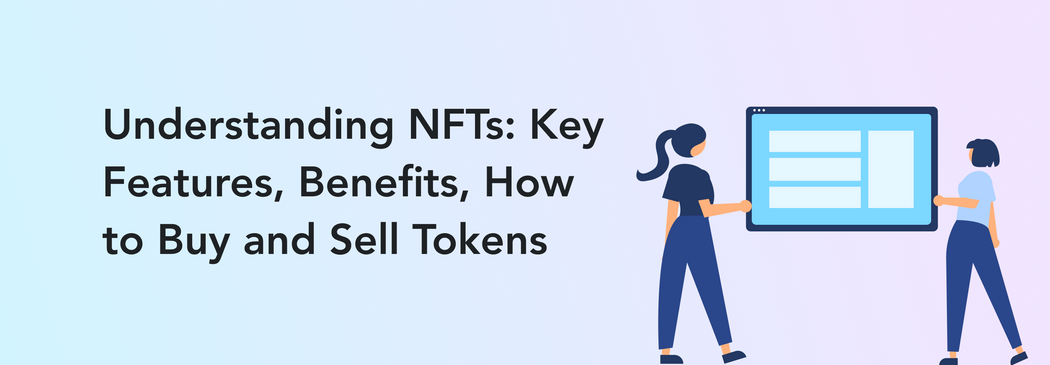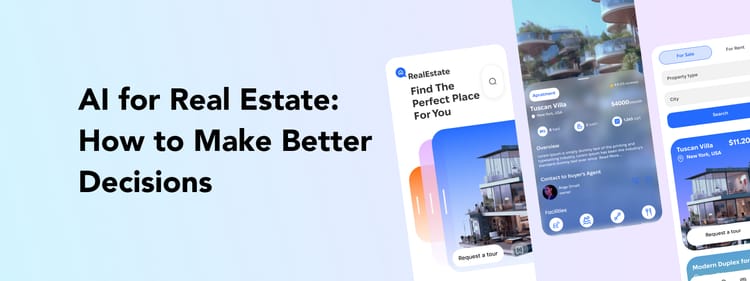At the moment of writing this article, 33,077 NFTs have been sold in the last 24 hours. Quite a lot, isn’t it? Especially if we consider the fact that just a year ago an NFT was just another mysterious abbreviation.
Speaking of which, what does NFT stand for? A non-fungible token. If this information doesn’t make the topic any clearer for you, let us explain what NFTs are, how do NFT marketplaces work, and why everyone is so obsessed with these right now.
What are NFTs
NFTs are unique digital objects. For example, it can be a digital artwork or a meme. Yes, you can find many-many copies of the same picture online but seeing it on Google search and downloading that image to your computer doesn’t mean you own it. Just like buying a Mona Lisa postcard doesn’t mean that you bought the original painting hanging in the Louvre Museum. So yes, the good news is that now you can own a meme.
NFT is the one and only original digital object. But how do we know who owns a picture that has so many duplicates online? The answer is one word — blockchain. The Ethereum blockchain that most NFT platforms run on provides each token with an identification code and metadata, meaning that anyone on the Internet can look into the current and previous ownership of the object and track the transactions behind it.
NFTs use the same blockchain technology as cryptocurrencies. The difference is that while 100 Bitcoins can be exchanged for another 100 Bitcoins and it won’t make any difference, NFTs are unique, so we cannot trade them for an equivalent unit.
Main NFT properties
Apart from being unique and non-exchangeable, there are some other NFT characteristics that you have to know.
- Indivisibility. You can’t divide tokens into parts and buy a share in an NFT.
- Tradability. You can sell and buy NFTs on specialized marketplaces and trading platforms.
- Authenticity. You can check the originality of a token and track its source, previous owners, and so on. Each token always belongs to someone.
- High liquidity. It’s easy to sell a token due to the immense popularity of NFTs.
These are the main features of NFTs. Let’s now discuss where can we sell and buy them: the NFTs marketplaces.
What are NFT marketplaces and how do they work
NFT marketplaces have become an inseparable part of the digital economy. As we have mentioned before, you can’t trade tokens on usual crypto exchanges, thus dedicated platforms started to appear.
There are numerous NFT marketplaces today; some focus on digital art, some sell Tweets or game attributes. We will discuss some of the most popular marketplaces in a while. As for now, the question is: how is the trading process enabled on such platforms?
Smart contracts
The main feature of any NFT marketplace is a smart contract. What is it? A smart contract is a digital self-executing document that specifies the agreement between the customer and the seller as well as the metadata of a very token. It is not a regular document as all the data is encoded and based on blockchain, so it’s safe to say that it is impossible to forge the information.
Smart contracts are what establish the transparency of the trading process. They also ensure that the token is unique and original, its ownership is verified, and it can be transferred. Basically, a smart contract allows running a transaction only when all the requirements are met. Two main standards are used for the Ethereum blockchain: ERC 1155 Standard and ERC 721 Standard.
Crypto wallets
Before a smart contract is created, a buyer should pay for the NFT. Of course, regular banking is rarely involved. Mostly, cryptocurrency is used for NFT trading, so buyers need to have a crypto wallet.
What’s peculiar about crypto wallets is that they don’t actually store neither NFTs nor cryptocurrency. What they do is point to the ownership in the blockchain and provide access to the very assets. A buyer gets a private key to the address where they can authorize the transaction. Some popular crypto wallets include Binance, Metamask, and Coinbase.
Auctions
Finally, there is one more important aspect of the NFT marketplaces. Very often, they function as auctions. Of course, some platforms offer fixed-priced items but the demand for NFTs is rather high, so no wonder that there is a certain level of competition around.
Building an NFT marketplace: Perpetio’s experience
Though NFT marketplaces differ in the type of assets they sell, business models, and designs, there is a set of features and principles you will find on any of those platforms. Not that long ago, our team worked on an NFT marketplace, and it’s a good chance to showcase the functionality of such a solution.
Feed
First things first, an NFT marketplace’s home page will likely be a feed with the trending or recently added tokens.

Convenient search with filters
Users should be able to browse the collectibles; a wide variety of filters will help them with finding a digital object they like faster.
Listing page with the item’s characteristics and history
The item page should contain the very object and its parameters, such as size, publishing date, and the author. As in the NFT world ownership matters a lot, it’s best if the platform provides information on the current and previous token owners.
Buying options
Depending on the pricing model (auction or fixed-price), you might see several buying options. For example, if an NFT is for auction, users can view the bidding history and make their bids.
Crypto wallet integration
As we have mentioned above, a crypto wallet is the main payment option for NFT marketplaces.
Creating collection or listing page
When it comes to the NFT creators, they can add their works as separate tokens or make digital collections. They also have to provide the object’s description for the buyers and decide on the pricing.
Top NFT platforms
With the popularity of NFTs, it’s not surprising at all that there are so many marketplaces. Let’s review both the most popular and unusual ones:
OpenSea
OpenSea is currently “the” NFT marketplace. It is the largest NFT trading platform at the moment, the one producing the most trading volumes, and even the first of such marketplaces to appear. OpenSea allows both fixed-price and auctions selling as well as supports several crypto wallets. One can sell and buy virtually anything on Opensea, from artworks to Pokemon cards.
Axie Infinity
Axie Infinity is the second biggest NFT marketplace after OpenSea. But there is one thing that makes it drastically different from OpenSea: it’s not a usual digital object marketplace but rather a game where users can collect and exchange digital pets.
Rarible
Rarible is the main OpenSea’s competitor when it comes to digital object marketplaces. Founded in 2020, Rarible saw a huge development lap; while it still has a significantly smaller amount of users than OpenSea, its royalty rate for NFT creators is way higher (30% vs 10%), so more and more sellers are now looking into Rarible.
SuperRare
SuperRare is an NFT marketplace that focuses exclusively on digital art. It is presented as a virtual art gallery that is quite selective with its exhibits. It is a platform for true art lovers who want to obtain unique digital artworks — just as the name suggests, the selection includes some of the rarest art objects.
Mintable
Mintable is a perfect marketplace for artists who are not that tech-savvy when it comes to blockchain and want to focus on the art itself. Mintable offers simple tools for transforming regular digital artworks into NFTs so that the creators can sell them directly on the platform. Mintable uses the very same Ethereum blockchain as many other NFT marketplaces.
Valuables
Now, let’s turn to a more fun side of NFT marketplaces. And, as you can guess, there is a platform specifically designed for selling Tweets. That’s right — Tweets are also a real digital asset just like artworks or game objects. Tweets are autographed by their creators through the @handle on Twitter, so the buyers can be sure about their originality.
CryptoKitties
CryptoKitties is very similar to Axie Infinity, which we discussed above. This platform is all about collecting virtual kittens. You can breed the cats and even unlock some rare traits, like patterns. Each cat is totally unique and owned by one user only. Isn’t that a cool hobby to breed digital pets?
NBA Top Shot
So, we know that all kinds of photos, memes, and even Tweets can be NFTs. What else? How about NBA shots? Yes, those can be bought and sold too. The shots are officially licensed and absolutely tradable. And trust us when we say that people are ready to spend quite some money to own that very basketball shot they once saw on the TV.
Decentraland
The last NFT platform on our list is truly something different. It’s not just a marketplace — it’s a whole virtual world, quite literally. Everything there, like land, real estate, character accessories, or even assets created by other players, can be bought via a crypto wallet. If the game continues its development with the rapid speed it has now it can be a full-scope metaverse — the first successful one.
What is all the hype about: NFT advantages for artists, buyers, and marketplaces
Now, when you know everything about NFTs and where to buy them, the only question remaining might be “Why?” Why is everyone so obsessed with NFTs, and which perks do they bring to sellers and buyers? Let’s find out.
Benefits for NFT creators:
- A simple way to monetize one’s art.
- Getting recognition online.
- Accessing the global market: more customers and partnership opportunities.
- It is easy to start selling NFTs and the entry barrier is rather low.
- Artists receive royalties from the marketplaces automatically: no complicated management processes.
- NFT marketplaces give power to artists and democratize the art market: the creators decide on the collections and exhibitions, which pieces are for selling, and how much do they cost.
Benefits for NFT buyers:
- A chance to establish a direct connection with the favorite artists.
- NFTs change their value over time: it’s a good investment, just like cryptocurrencies.
- Art becomes more accessible than ever before: one can buy a digital picture for an affordable price.
- Blockchain guarantees the security of transactions and the originality of the piece.
- One gets exclusive ownership over a unique digital object.
- It’s just a fun hobby; Tweets or NBA shots are no different from comic books and baseball pins.
Benefits for NFT marketplaces:
- The NFT industry has an incredible growth rate. Just in the first haft of 2021, NFT transactions rose by 328%. There is no better time to invest in such a marketplace than now.
- Developing an NFT marketplace is a profitable business as marketplaces get a percentage from each transaction.
- It is easy to find a niche and target audience: your marketplace can focus on any kind of tokens, from music to virtual characters.
NFTs offer some perks to each participant of the transaction, including the marketplaces. Creators can share and sell their works more easily, buyers get direct access to the digital objects, and marketplaces earn a profit for assisting with the process.
The bottom line
NFTs have truly revolutionized the way we see art, ownership, and digital assets in general. We can expect the popularity of NFTs to only raise over time and, as a result, more and more marketplaces will be appearing to satisfy the diverse needs of sellers and buyers.
Did this post inspire you to look into buying NFTs or maybe developing your own marketplace? Let’s collaborate and make an NFT platform the digital world needs right now.





